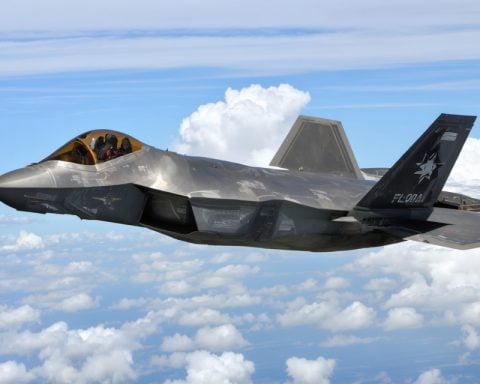The MiG-31 Foxhound: A Timeless Legend
Renowned as one of the fastest combat aircraft ever, the Russian MiG-31 Foxhound continues to be a formidable presence in the skies, with the capability to reach blistering speeds of up to Mach 2.83. Despite its longstanding service since the 1980s, comprehensive modernizations ensure its relevance well into the current century.
The latest enhancements to the MiG-31I variant have notably included advanced air refueling capabilities, upgraded avionics, and a revamped missile system. These improvements extend its range and effectiveness, underscoring its strategic importance in Russian and Kazakhstani air defenses.
Precision and Power
While not designed for nimble maneuvering, the MiG-31 excels in its primary mission of high-speed interception. Its sophisticated phased-array radar system allows it to track multiple targets over long distances, fulfilling a vital role in national air defense.
The aircraft’s engineering reflects its purpose, with an airframe incorporating nickel steel, titanium, and composite materials, granting it durability and performance in challenging conditions. Its low-bypass-ratio turbofan engines further enable extensive operational reach and efficiency.
Enduring Legacy
Having first taken flight in 1975, the MiG-31 remains a central pillar of Russian air capabilities. Despite no direct exports from the Soviet Union, speculation about international deployments persists, though official sales to Syria have been consistently denied by Russian authorities.
Slated to remain operational until at least 2030, the MiG-31 embodies both historical significance and continued tactical utility in modern military strategy. The Foxhound’s enduring presence reflects Russia’s commitment to maintaining a highly capable aerial defense system.
The Unexpected Faces of the MiG-31 Foxhound
An Unseen Impact: The MiG-31’s Influence Beyond the Runway
The MiG-31 Foxhound is more than just an iconic aircraft; its legacy extends far beyond military strategy and battlefronts, impacting economic, environmental, and geopolitical spheres in ways often overlooked. As Russian and Kazakhstani air defenses continue to rely on this high-speed interceptor, the broader consequences are significant and multifaceted.
Economic Upside and Challenges
The continued operation and modernization of the MiG-31 have provided substantial economic benefits, particularly in the defense sectors of Russia and Kazakhstan. Manufacturing and maintenance hubs create skilled jobs and spur technological advancements. However, these benefits do not come without challenges; the financial burden of upgrading and sustaining such advanced machinery can strain national budgets.
Moreover, countries that invest in maintaining legacy aircraft like the MiG-31 may do so at the expense of investing in newer technologies, potentially delaying the development of next-generation technologies that might be needed in an evolving aerial warfare landscape.
Geopolitical Ramifications
The MiG-31 Foxhound’s longevity and persistent rumors of international deployments have stirred controversy and speculation. In the current geopolitical climate, possessing such powerful interceptors could shift regional balances of power, particularly if newer updates enable operational deployments outside Russian borders—a strategic move that has both supporters and dissenters.
The question of export possibilities raises further uncertainty. While Russia denies any official exports beyond Kazakhstan, the presence of a modernized MiG-31 in another country’s airspace could polarize global opinion. It poses the question: Is the Foxhound a tool for peace through deterrence, or does it threaten to spark new arms races?
Environmental Considerations
Although often overlooked, the environmental impact of maintaining an older fleet like the MiG-31 cannot be ignored. With advances in green technologies in aviation, the Foxhound’s extensive use of traditional fuel and materials places it at odds with global efforts to reduce carbon footprints. Balancing the need for high-speed interception against a growing environmental conscience presents a significant challenge.
Advantages and Disadvantages
The MiG-31 is undeniably effective in its designed role, making it a key component of air defense. Its ability to track and intercept threats at high altitudes and speeds ensures national security. On the downside, prioritizing such technologies may divert attention and resources from modern, potentially more versatile systems, raising questions about the evolution of defense strategies.
What Lies Ahead?
As the world watches the MiG-31 Foxhound continue its journey, the key question remains whether maintaining such legacy aircraft is a strategic genius or an obsolete endeavor clinging to past glories. With nations like China and the U.S. investing in fifth- and sixth-generation fighters, will Russia’s focus on their longstanding interceptor yield dividends, or merely nostalgia?
For more insights on global military aviation trends and perspectives, visit Jane’s and FlightGlobal.
In a rapidly changing world, the MiG-31 Foxhound is more than a relic; it is a catalyst for discussion on finding the balance between tradition and innovation in modern warfare.







